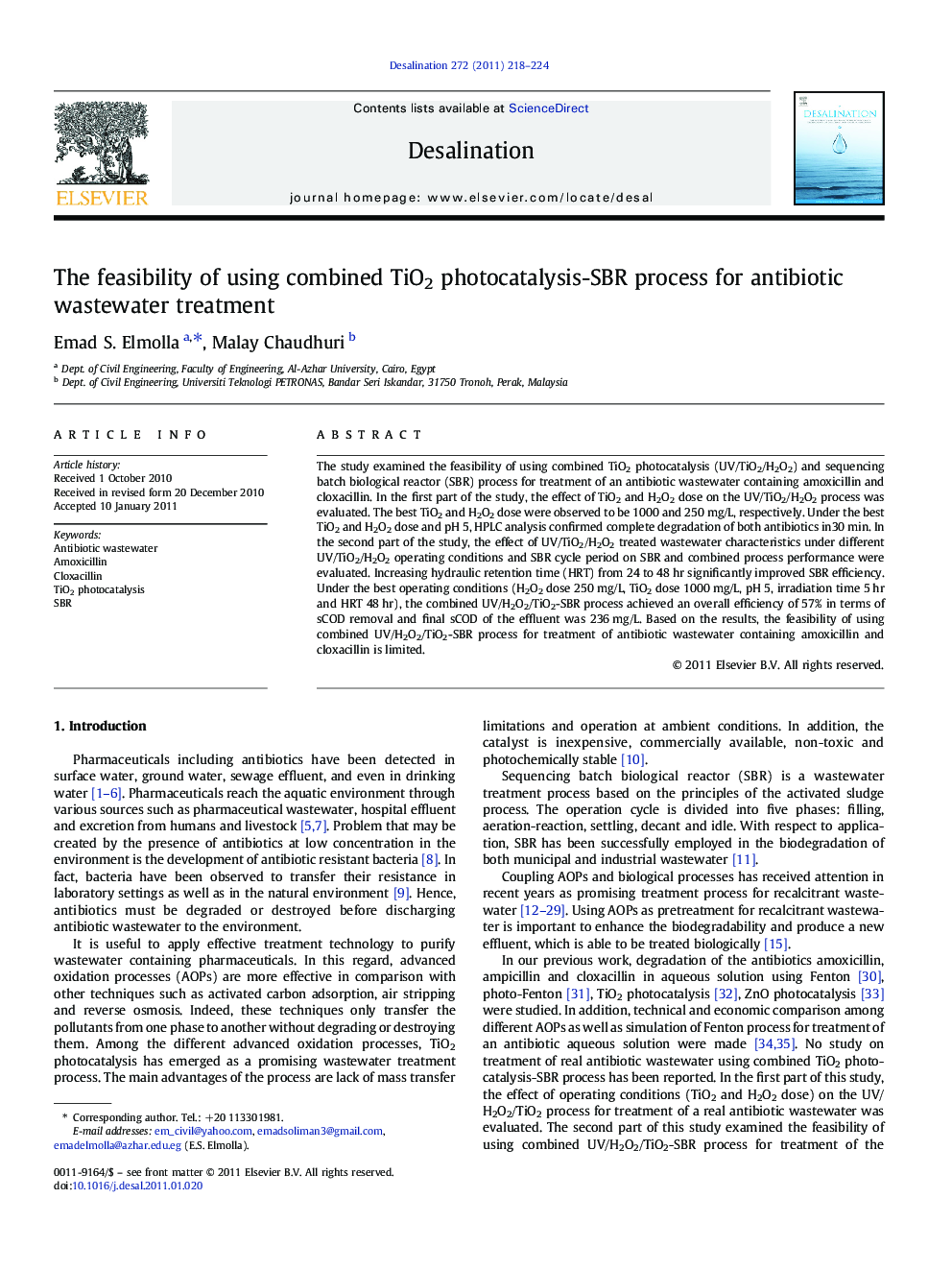| Article ID | Journal | Published Year | Pages | File Type |
|---|---|---|---|---|
| 625227 | Desalination | 2011 | 7 Pages |
The study examined the feasibility of using combined TiO2 photocatalysis (UV/TiO2/H2O2) and sequencing batch biological reactor (SBR) process for treatment of an antibiotic wastewater containing amoxicillin and cloxacillin. In the first part of the study, the effect of TiO2 and H2O2 dose on the UV/TiO2/H2O2 process was evaluated. The best TiO2 and H2O2 dose were observed to be 1000 and 250 mg/L, respectively. Under the best TiO2 and H2O2 dose and pH 5, HPLC analysis confirmed complete degradation of both antibiotics in30 min. In the second part of the study, the effect of UV/TiO2/H2O2 treated wastewater characteristics under different UV/TiO2/H2O2 operating conditions and SBR cycle period on SBR and combined process performance were evaluated. Increasing hydraulic retention time (HRT) from 24 to 48 hr significantly improved SBR efficiency. Under the best operating conditions (H2O2 dose 250 mg/L, TiO2 dose 1000 mg/L, pH 5, irradiation time 5 hr and HRT 48 hr), the combined UV/H2O2/TiO2-SBR process achieved an overall efficiency of 57% in terms of sCOD removal and final sCOD of the effluent was 236 mg/L. Based on the results, the feasibility of using combined UV/H2O2/TiO2-SBR process for treatment of antibiotic wastewater containing amoxicillin and cloxacillin is limited.
Research highlights► The work focused on a hazardous wastewater treatment (antibiotic wastewater). ► Complete degradation of the antibiotics was achieved by the treatment system. ► Increasing retention time from 24 to 48 hr significantly improved SBR efficiency. ► The feasibility of using UV/H2O2/TiO2-SBR process for the treatment is limited.
